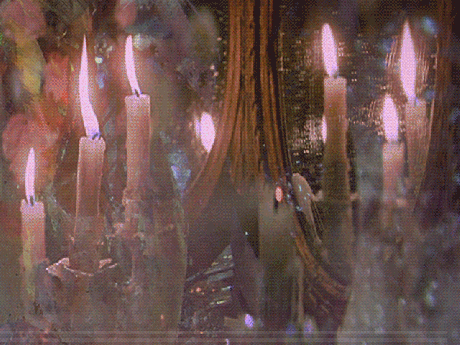
Rachel Lauren Kaster. “Un-Fuck the World.” Hexon/Hexoff at Noysky Projects. Photo Courtesy of the Gallery.
Hexon/Hexoff at Noysky Projects
By Anna Garner
Through April 1st
A hex is a spell, often linked to witchcraft, voodoo, or other forms of magic. With this semantic embarkation, Hexon/Hexoff presents the work of eight artists giving aesthetic form to ritual and/or embodying the role of artist as shaman. The exhibition includes video, sculpture, painting, and photography. Among these is Don Edler’s sculpture, Ark 2: The Return of Consciousness. Displayed in the center of the gallery, it is strikingly delicate, has a calming, muted color-palette, and the use of material is curious and not immediately discernible.

Don Edler. “Ark 2: The Return of Consciousness” Hexon/Hexoff at Noysky Projects. Photo Courtesy of the Gallery.
The curatorial statement additionally posits that these artists’ use magic as a site of empowerment that can unite the socially oppressed through the activation of alternative narratives. The magical and political are not new companions in art. For instance, Ana Mendieta’s ritualistic performances used elements of Santeria to speak to the position of the female body and the uprooting from her home country, Cuba. These pieces created an empowering site for a synthesis of her politically bifurcated experiences. In comparison, the artists in Hexon/Hexoff do not reach quite the same emotional and social weight of Mendieta’s work; the correlation of the magical to the political, except in a few pieces, is largely unclear and the charged presence of the magical is at times missing.

Ilona Berger and James Silgnena. “Notes From Kingdom of Rhythms” Hexon/Hexoff at Noysky Projects. Photo Courtesy of the Gallery.
Yet, in group shows there is always work that outshines its neighbors and in this show it was Ilona Berger and Jamson Silgena’s video, Notes from Kingdom of Rhythms. It was the singular piece that fully embodied the curatorial direction and was both visually and thematically compelling. The work adopts components of Haitian street theater into a contemporary folktale tribute to shamanistic vodoun drumming, both of which have been used to create space for social justice and resist oppression. The narrative is based on practices of Haitian vodou and set in present day Haiti; it follows the murder of a king who is turned into a zombie, escapes his entrapment, and subsequently journeys to regain his memory and discover his destiny. As an American viewer unfamiliar with cultural and religious practices of Haiti, it is not certain what parts of the work are traditional or reimagined, factual or taking the liberty of art. Yet this does not limit the impact or importance of the work. It conveys the continued importance of storytelling in contemporary life and the often-unfelt psychic influence of ones own cultural and religious history. It is powerful, smartly filmed and edited, and a well-thought account of the connections between the magical and the political.

Ilona Berger and James Silgnena. “Notes From Kingdom of Rhythms” Hexon/Hexoff at Noysky Projects. Photo Courtesy of the Gallery.
Art, magic, and spirituality have been intertwined since the emergence of aesthetic forms and though less dominant today, it continues to be a relevant reciprocal relationship; even Joseph Beuys fancied himself a shaman in his work. While the aims of this exhibition are valuable, in execution it is only at the cusp of advancing a conversation on art, magic, and the political. In saying this, the exhibition is certainly worth viewing; there are visually compelling pieces and Ilona Berger and Jamson Silgena’s moving video is a work you will want to see more than once.
#california #losangelesartist #art #IlonaBerger #hex #TheoEliezer #LosAngelesArts #losangelesart #contemporaryart #LosAngelesArtists #artgallery #VabiannaSantos #groupshow #artandcake #JamesSilgnena #artexhibition #NickBrown #AlineMare #ArtandCakeLA #fineart #artists #artist #artsmagazine #AnnaGarner #HexonHexoff #artreview #artexhibit #Noyskyprojects #ArtandCulture #southerncaliforna #RachelLaurenKaster #DonEdler #losangelesgallery

















